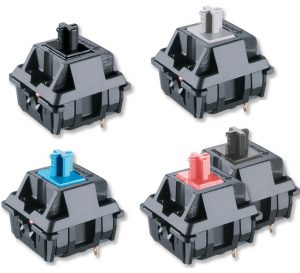Why Selecting the Right Membrane Switch Is Important for Your Product Layout
Comprehending the Capability of Membrane Layer Switches for Customer Interface Devices
The performance of membrane layer changes stands for a considerable innovation in customer interface layout, combining efficiency with visual convenience. As markets progressively prioritize individual experience, recognizing the subtleties of membrane layer switch technology comes to be important.
What Are Membrane Layer Buttons?
Membrane switches are cutting-edge interface devices that facilitate customer communication with digital equipment. These functional parts contain multiple layers, consisting of a graphic overlay, spacer, and a printed circuit layer. The style allows for a seamless assimilation right into different electronic tools, enhancing both the visual and functional facets of interface.
Membrane layer switches are typically employed in a wide variety of applications, from home devices to industrial equipment and clinical devices. Their building and construction normally includes a slim account, making them an ideal choice for portable designs. The responsive feedback provided by these buttons can be crafted to fulfill certain individual preferences, ensuring reliable interaction in between the customer and the device.
Durability is an additional substantial advantage of membrane switches, as they are immune to dirt, dampness, and chemicals, which enhances their lifespan popular settings. Furthermore, these buttons can be customized in regards to form, size, and graphic design, enabling branding and user-specific attributes. On the whole, membrane switches over stand for a sensible remedy for improving customer experience in electronic gadgets, incorporating capability with visual appeal in a reliable fashion.
Exactly How Membrane Switches Work
Operating on an uncomplicated principle, membrane changes utilize a split building to sign up individual input successfully. Each button contains multiple layers, consisting of a published circuit layer, a spacer layer, and a leading graphic layer, which are created to work with each other seamlessly. When an individual presses the top layer, it compresses the spacer layer, bringing the conductive components of the circuit layer right into contact with each various other.
This contact develops a shut circuit, indicating the tool to execute a particular feature. The design allows for numerous setups, including tactile comments, which can boost the user experience by offering a physical sensation upon activation. The materials made use of in membrane layer switches often include flexible substratums, such as polyester or polycarbonate, which make sure sturdiness and durability versus damage.

Secret Benefits of Membrane Buttons

An additional significant advantage is their density. Membrane layer buttons are thin Our site and lightweight, which allows manufacturers to conserve space in their tools without sacrificing performance. This function is especially advantageous in applications where weight and quantity are crucial factors to consider.
Additionally, membrane switches are resistant to dirt, dampness, and chemicals, improving their sturdiness. This resilience prolongs their life-span and reduces the requirement for constant substitutes, resulting in expense savings in time.
In addition, the responsive responses offered by membrane switches can be enhanced to boost individual interaction. They can include features such as increased buttons or audible clicks, improving usability and customer experience.
Applications Across Industries
Interface devices utilizing membrane layer buttons prevail in a vast variety of sectors, showcasing their versatility and performance. Membrane Switch. In the medical sector, membrane buttons are indispensable to tools such as diagnostic devices and client surveillance systems, where their longevity and convenience of cleaning are crucial for keeping hygiene requirements. In the auto sector, these buttons are employed in control panel controls and infotainment systems, providing a sleek and modern-day user interface for users.
In addition, the consumer electronic devices field advantages from membrane layer switches in devices and portable gadgets, where portable design and easy to use interfaces enhance individual experience. Industrial applications also leverage membrane changes for control panels in equipment and automation systems, highlighting their my link robustness and resistance to rough settings.
In the aerospace and defense industries, membrane switches are used in cabin controls and devices, where dependability and performance under severe problems are paramount. In addition, the video gaming sector progressively incorporates membrane layer switches in controllers and arcade equipments, contributing to an engaging individual experience. In general, the flexibility of membrane changes enables their prevalent use across countless fields, emphasizing their importance in modern-day interface layout.
Future Patterns in Membrane Layer Change Innovation

In addition, the use of advanced products, such as polycarbonate and polyester films, is anticipated to increase, offering improved toughness and resistance to environmental stress factors. These materials add to the total longevity of membrane layer buttons, making them appropriate for harsher commercial applications.
Moreover, the consolidation of clever modern technology, including IoT connectivity, will certainly enable membrane layer buttons to communicate Extra resources with other devices and systems, promoting a more interactive user experience. This pattern aligns with the expanding need for smart gadgets across different sectors, from health care to consumer electronic devices.
Last but not least, personalization alternatives are prepared for to expand, enabling manufacturers to create bespoke remedies customized to particular customer requirements and choices. These advancements will place membrane layer buttons as essential components in the evolution of interface technology.
Final Thought
In final thought, membrane changes represent a crucial advancement in customer interface modern technology, offering a trustworthy and flexible solution for varied digital applications. As innovations in product science and touch picking up innovations continue, the capability and applicability of membrane buttons are anticipated to expand, strengthening their value in modern-day electronic devices.